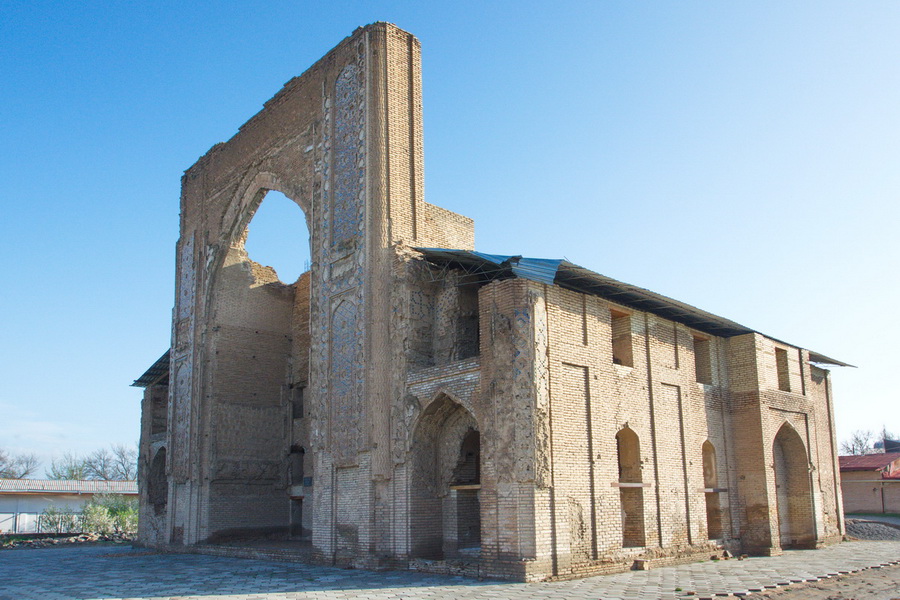Ishratkhana Mausoleum, Samarkand

The Ishratkhana Mausoleum is a dilapidated historical monument located in the southeastern part of Samarkand. Its grandiose ruins continue to impress visiting travelers and locals alike, serving as a testament to the scope and grandeur of Uzbekistan's cultural heritage. The mausoleum was built in the 15th century at the behest of Habiba Sultan, the wife of Abu Said, the last ruler of the unified Timurid state. The tomb was intended for her daughter, Sultan-Khovan-Bekum, who tragically drowned in a canal. To honor her memory, her grieving parents decided to build a luxurious mausoleum over her grave, richly decorated to match the grandeur of the city's architecture.
Legend
However, a popular legend claims that the mausoleum was built by Tamerlane himself. According to the story, Tamerlane was inspecting his lands when he found himself in a magnificent garden where he met a beautiful maiden. Enchanted, he asked her to be his wife and she agreed. On the very spot where they met, the emir ordered the construction of a grand palace called Ishrathona, or "the House of Fun and Joy. It is said that the structure was first used for grand feasts and later became the burial place for Tamerlane's female descendants. However, this story is unlikely, as Tamerlane's life took place mostly in the 14th century, while the mausoleum was built a century later.
The Ishratkhana Mausoleum has suffered considerable damage from numerous earthquakes. It was originally crowned by a massive dome supported by two large pillars. But even this imposing structure eventually succumbed to the forces of nature, and its majestic dome was destroyed. Additional damage came from human intervention, as local residents removed some of the bricks for personal use. Despite these losses, the remaining ruins of the once majestic mausoleum still stand proudly, symbolizing the enduring legacy of Central Asia's cultural heritage.

